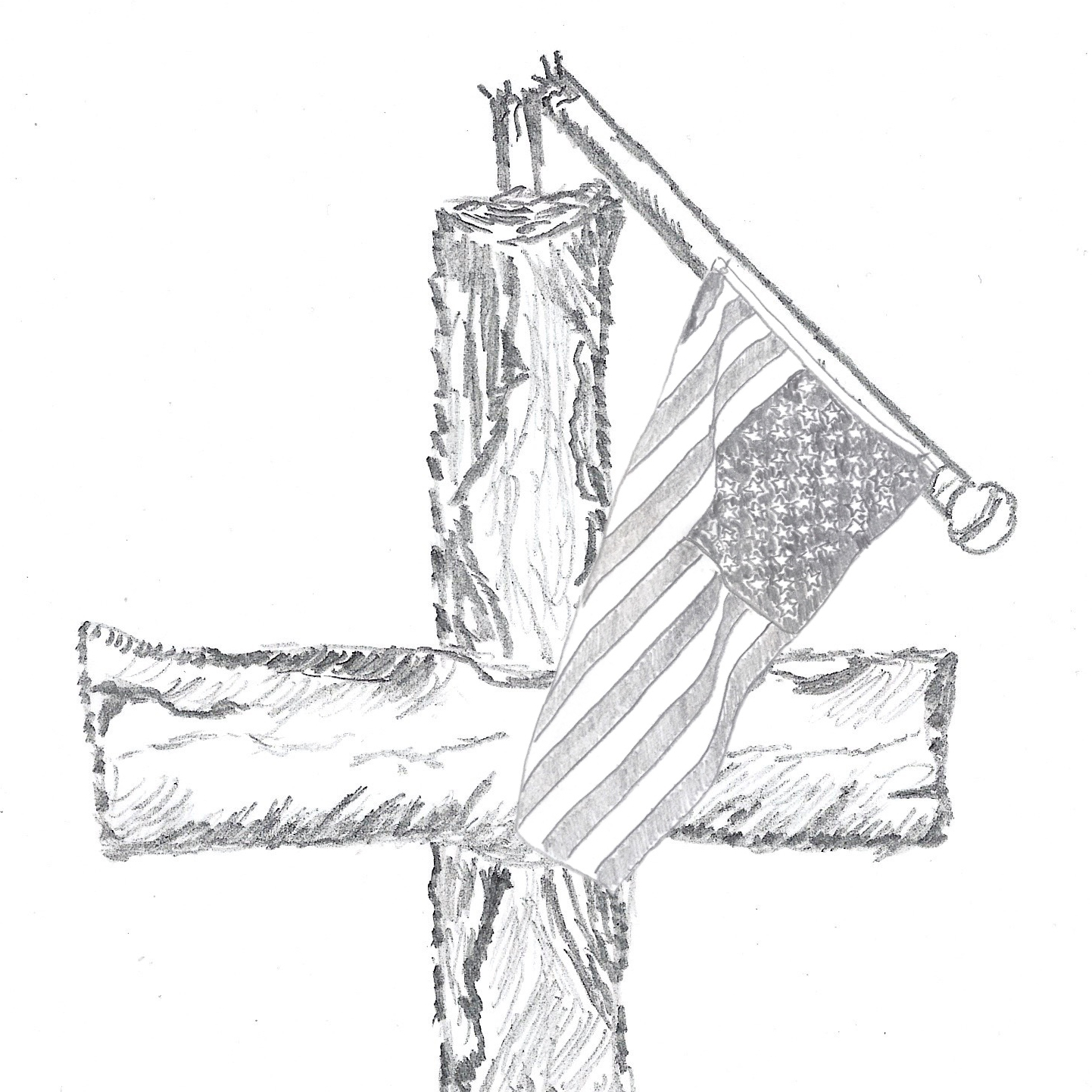I sat there, in front of the crowd, fidgeting in my seat. No, it wasn’t a trial but trivia contest – a Bible trivia contest – at my Christian high school’s annual camp. I was one of four representatives for my sophomore (Year 10) class. On our right sat the seniors. And only one team was going through to the final round.
But there was more at stake here than mere camp points for my class. This was a room full of good, Christian young women. And if my church and youth group upbringing had taught me anything, it was that extensive Bible knowledge was chum in the water for evangelical girls hunting for godly boyfriend material.
Well, these ladies needed to prepare for a feeding frenzy, because my scriptural bona fides were about to swim these seas like a school of tasty tuna. Who was the lone escapee from the massacre at Nob, perpetrated by King Saul? Why, Abiathar the priest, of course. Who bore the twins Perez and Zerah to Judah the patriarch? That would be Tamar. List the ‘Fruits of the Spirit’ in reverse order? Self-control, gentleness, faithfulness, goodness, kindness, patience, peace, joy and love.
Yes, you’d have to get up pretty early in the morning to get one of these softball questions past me.
Reading Anew
Yet for all that arcane biblical knowledge, for all that collection of trivial facts (which amazingly, had no positive influence on my dating life), I had never once read a book of the Bible from beginning to end in one go. Scripture had always been delivered to me in bite size passages and stories, covered in Sunday school rooms and sermons, or scattered across the pages of devotional books.
That would change in university with a class on Johannine Literature, in which a major component was reading John, the Fourth Gospel, from cover to cover. This was the first time I analysed a book of the Bible as a complete literary work, pulling apart its structure and exploring its themes.
My mind was blown. I never knew John’s narrative revolves around seven signs and their aftermaths and divides into two major sections. That the story reaches its climax, not with the resurrection, but with Jesus’ final conversation with Thomas: ‘You believe because you have seen? Blessed are they who have not seen, yet believe’ (20:29). That the author was a master of irony, of recurring motifs, woven throughout the gospel.1
Reading John as literature opened the floodgates on the way I would read the rest of the Bible.
For example, I’d never known Genesis’ opening chapters could be read as something other than scientific or historical (in the contemporary sense) accounts. That they show remarkable resemblances in many aspects to the myths and stories of Israel’s neighbours in the Fertile Crescent. That the Genesis texts make better sense when read in that cultural context, with similar cultural expectations and values.2
I’d never known the historical books – Joshua, Judges, the two books of Samuel, and the two of Kings – aren’t history in the modern, western sense, but theological history, written expressly to make a theological point. That, according to many, they seem to share a theology with Deuteronomy, one of blessings for obedience to the Covenant and curses for disobedience.3 That (importantly) when they describe scenes of genocide, the killing of men, women, children and animals, they’re employing a kind of hyperbole common to the cultures of the time.4
I’d never realised the gospels Matthew, Mark and Luke are known as the ‘Synoptic Gospels’ (‘seen together’) due to the similarities in their material. That Mark is considered by most scholars to have been written first and to serve as a major source for Matthew and Luke. That Matthew and Luke share another body of material that must be drawn from another source (referred to as ‘Q’). That biographical writers of the time didn’t concern themselves with the chronology of events, but arranged material thematically. And the gospel writers did the same.5
I’d never been told the contemporary dispensationalist reading of Revelation, which envisions coming catastrophes and seven years of Tribulation and a one-world government headed by a silver-tongued Antichrist is largely a novel interpretation of the last 200 years. That most of the book belongs to a popular genre of the centuries just before and after Jesus’ life known as apocalyptic literature. That Revelation shares many common tropes with similar apocalyptic texts. That the purpose of an apocalypse (Greek for ‘revealing’ or ‘unveiling’) is always to give spiritual commentary on events current to the author and audience. That the conflict between early Christianity and the Roman Empire thus gives us a better framework for interpreting the imagery of the book.6
Too Human?

The evangelical world has long taken it as, well, gospel that the Bible is a simple, straightforward book, which anyone can pick up, read and understand. Generations of Christians have chopped most of the Bible – whether legal code, or extended poem, or collection of proverbs, or ancient letter – into short, sharp statements of theological fact, each with a chapter-and-verse reference for easy location. In this way, we have reduced the Bible to a reference book. From it, we can quickly draw out whatever answer we need. Like a Christian life manual. Basic Instructions Before Leaving Earth.
And reading the Bible as a library of literature, instead of as a reference book, can be scary for many honest and well-meaning Christians, because it treats the scriptures as anything but straightforward and simple, easy to understand. Because it can be jarring and disorientating. Because it can open the door to many hard questions about God, about humanity’s relationship to God, about origins, about history… about you-name-it. Some might worry this makes the Bible too human – less divine, perhaps, even less holy. How can we take the Bible as a source of truth, as a guide for life, if the text is stamped with so much humanity?
However, there’s something beautiful about inspired scriptures penned by calloused human hands and contemplative human minds. There’s something raw and relatable about humans wrestling with their understanding of God and a God-centred life. And this way of viewing the Bible demands we wrestle with its books and passages in an effort to understand them.
I suspect, too, that the scriptures themselves demand to be read with their humanity in tact. Like any other documents, more light is shed by reading the texts according to their genres, in light of their original languages, and within their historical and cultural and theological settings than by ignoring these realities. That seems to me a more respectful way of approaching the Bible – far less arrogant than the assumption the Bible was written to us and for us and that we’re the only ones who truly understand it.
Meditations
When we read with due consideration of language, culture, history, genre, and humanity, truth isn’t plucked from the page simply and easily in the form of memory verses and proof texts to be filed away in the mind for current or future use. No, we instead come to see the texts as meditations of sorts: meditations on YHWH’s creation, on YHWH’s nature, on YHWH’s Covenant with Israel, on Israel’s history, on her future, on Jesus’ life, his death, his resurrection, his kingdom, on humanity’s future. And from these meditations, truth rises organically, slowly, with substance. As we grapple with all the texts reveal, guided by the Spirit, truths about God, about Jesus and his way, about humanity settle themselves deep within the soul. We heavily invest in the scriptures, and they heavily invest in us.
This approach is filled not with danger, but with power and life. It has certainly brought the scriptures to life for me – and I hope it might do the same for you.
Notes:
- I recommend Richard Bauckham’s Gospel of Glory for an excellent commentary on John.
- John Walton’s The Lost World books discuss the early chapters of Genesis at length. For an excellent general assessment of Near Eastern culture and its relationship to the Bible, I suggest his Ancient Near Eastern Thought and the Old Testament.
- This theory originates in large part from the scholarship of Martin Noth (1902 – 1968) and became the accepted wisdom of the majority of critics – but has been challenged in more recent years.
- Hyperbole was standard in ancient Near Eastern military writings, so it’s no surprise we see it in O.T. history books. An Assyrian governor Ninurta-kudurri-usur, for instance, says this about one of his victories: ‘I decisively defeated them. I annihilated them…I captured those who attempted to escape. I caused their blood to flow like waters of a river. The road with their corpses was visible to the eagles and vultures. I filled the mountains and wadis with their skulls like mountain stones. Birds made nests in their skulls.‘ Of course, later we find out he killed about 1,800 soldiers and 250 escaped.
- While there’s some debate over which gospel was written first (Mark, most people think, but Matthew, maybe?), source theory should not be controversial, as some form of it is accepted by all reputable scholars, conservative or otherwise.
- Within North America, dispensationalism remains so popular, Christians think of its ideas as orthodox Christianity; outside North America, this interpretive scheme is not at all common – and never has been. I would recommend Reading Revelation Responsibly by Michael Gorman, Revelation and the End of All Things, by Craig Koester, and N.T. Wright’s very accessible Revelation for Everyone.
Images:
Feature Image: By Shai Halevi on behalf of the Israel Antiquities Authority – Enlargement of image at Wikimedia-Commonshttps://upload.wikimedia.org/wikipedia/commons/a/a4/1039-1_for_screen.jpg, CC BY-SA 4.0, https://commons.wikimedia.org/w/index.php?curid=87731788
‘Searching the Bible‘: Found at https://www.signupgenius.com/Church/bible-trivia-questions-and-answers.cfm


Leave a comment